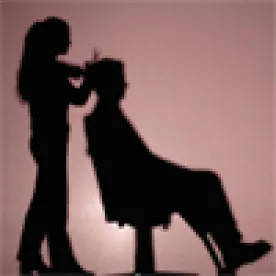While I do not usually write about non-precedential decisions, In re: Brown caught my eye as an interesting patent eligibility case. It does not relate to diagnostics or computer programs, but rather to the art of cutting hair.
The Patent Application At Issue
The patent application at issue is U.S. 09/795,210, which appears to be an unpublished application. The Federal Circuit decision sets forth claim 1 as follows:
1. A method of cutting hair comprising;
a) defining a head shape as one of balanced, horizontal oblong or vertical oblong by determining the greater distance between a first distance between a fringe point and a low point of the head and a second distance between the low point of the head and the occipital bone;
b) designating the head into at least three partial zones;
c) identifying at least three hair patterns;
d) assigning at least one of said at least three hair patterns to each of the said partial zones to either build weight or remove weight in at least two of said partial zones; and
e) using scissors to cut hair according to said assigned hair pattern in each of the said partial zones.
As summarized in the Federal Circuit decision, “[t]he specification provides an example of how to implement the claimed steps: if a client has a vertical oblong head shape, a hairstyle should be identified and assigned to partial zones on the sides of the head to build weight, and a second hairstyle should be identified and assigned to the top of the head to remove weight.” Thus, the claimed method “effectively allocates hair weight in opposition to head shape.”
In 2012 the USPTO Board affirmed a § 101 rejection of claims reciting steps (a)-(d) as being directed to an abstract idea. The applicant then added step (e), but the Board determined that concrete step was a “post-solution activity” that did not make the claims patent eligible.
The Federal Circuit Decision
The appeal was heard by Chief Judge Prost, Judge Moore and Judge Stoll. The decision was rendered in a per curiam opinion applying the two-step Mayo/Alice analysis.
At Mayo/Alice step one, the claims are drawn to the abstract idea of assigning hair designs to balance head shape. ….
[As for Mayo/Alice step two,] Much of Brown’s briefing focuses on the use of scissors in step (e) to transform the abstract idea into a patent-eligible concept. …. While it is true that a hair cut would not result without practicing the final step of cutting hair, step (e) merely instructs one to apply the abstract idea discussed above with scissors. …. We hold that step (e), using scissors to cut hair, is insignificant post-solution activity.
Steps (a)–(d) teach the stylist how to choose the hair style, step (e) amounts to “apply it.” These claims are not eligible for patentability under Mayo/Alice.
The Federal Circuit opinion notes that Brown “[did] not dispute that the hair cutting step ’employs a well-known concept,’ … or that the hair patterns applied are ‘industry recognized,’ … but rather “suggest[ed that] the inventive portion of the claims stem from steps (a) and (d), defining a head shape and assigning hair patterns to partial zones.” However, those steps could be performed visually and/or mentally, i.e., “entirely in one’s mind.” As such, the methods could not be patented.




 />i
/>i

